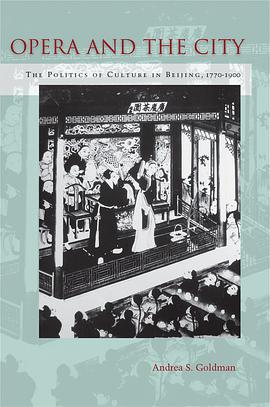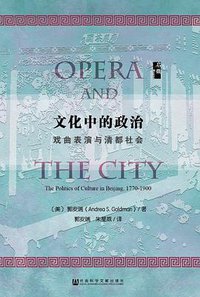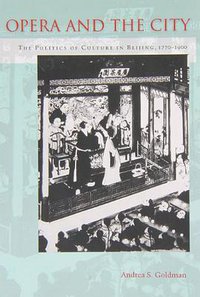Opera and the City
豆瓣
The Politics of Culture in Beijing, 1770–1900
Andrea S. Goldman
简介
In late imperial China, opera transmitted ideas across the social hierarchy about the self, family, society, and politics. Beijing attracted a diverse array of opera genres and audiences and, by extension, served as a hub for the diffusion of cultural values.
It is in this context that historian Andrea S. Goldman harnesses opera as a lens through which to examine urban cultural history. Her meticulous yet playful account takes up the multiplicity of opera types that proliferated at the time, exploring them as contested sites through which the Qing court and commercial playhouses negotiated influence and control over the social and moral order. Opera performance blurred lines between public and private life, and offered a stage on which to act out gender and class transgressions. This work illuminates how the state and various urban constituencies manipulated opera to their own ends, and sheds light on empire-wide transformations underway at the time.
contents
contents
list of illustrations
reign periods of the ming and qing dynasties
overture
part one audience and actors
1 opera aficionados and guides to boy actresses
the texts
the connoisseurs
the Lao Dou and other patrons
conclusion
part two venues and genres
2 metropolitan operas, border crossing and the state
the playhouse
the temple fair
the salon
conclusion
3 musical gentre, opera hierachy and court patronage
Yabu and Huabu
court patronage and regulation to circa 1860
genre delineation and the opera marketplace
court patronage and regulation after 1860
conclusion
part three social melodrama and the sexing of political complaint
the garden of Turquoise and Jade and its sources
garden and the ethics of early Qing
Suzhou playwright
garden on the commercial stage
conclusion
5 s*ex versus violence in "I, sister in law" operas
the stories
from page to stage
Kunju performances in context
eighteenth century court appropriation of "I, sister in law" operas
violence and the reinstantiation of moral order in the Pihuang tradition
conclusion
CODA
APPENDICES
LIST OF CHARACTERS
NOTES
BIBLIOGRAPHY
INDEX

